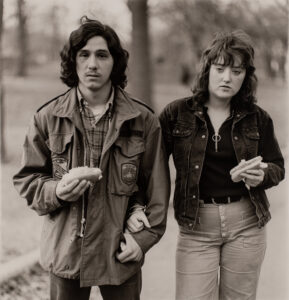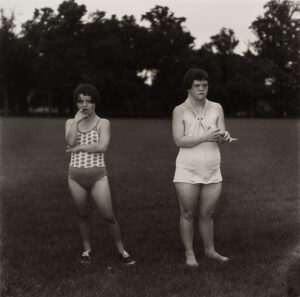Diane Arbus
American, 1923—1972
About
Diane Arbus
American, 1923—1972
Diane Arbus was an American photographer best known for her intimate black-and-white portraits. Arbus often photographed people on the fringes of society, including the mentally ill, transgender people, and circus performers. Interested in probing questions of identity, Arbus’s Identical Twins, Roselle, New Jersey (1967), simultaneously captured the underlying differences and physical resemblance of twin sisters. “A photograph is a secret about a secret. The more it tells you the less you know,” she once mused.
Born Diane Nemerov on March 24, 1923 in New York, NY, she was raised in a wealthy family, which enabled her to pursue artistic interests from an early age. She first saw the photographs of Mathew Brady, Paul Strand, and Eugène Atget while visiting Alfred Stieglitz’s gallery with her husband Allan Arbus in 1941. During the mid-1940s, the married couple began a commercial photography venture that contributed to Vogue and Harper’s Bazaar. Burned out on commercial work by the 1950s, Arbus began roaming the streets of New York with her camera, documenting the city through its citizens. These images were later shown alongside those of Garry Winogrand and Lee Friedlander in The Museum of Modern Art’s exhibition “New Documents” (1967). Having struggled with depressive episodes throughout her life, Arbus committed suicide on July 26, 1971 at the age of 48. In 1972, a year after her death, the first major retrospective of Arbus’ work took place at the Museum of Modern Art in New York. Today, her works are held in the collections of the Metropolitan Museum of Art in New York, the National Gallery of Art in Washington, D.C., and the Los Angeles County Museum of Art, among others.

